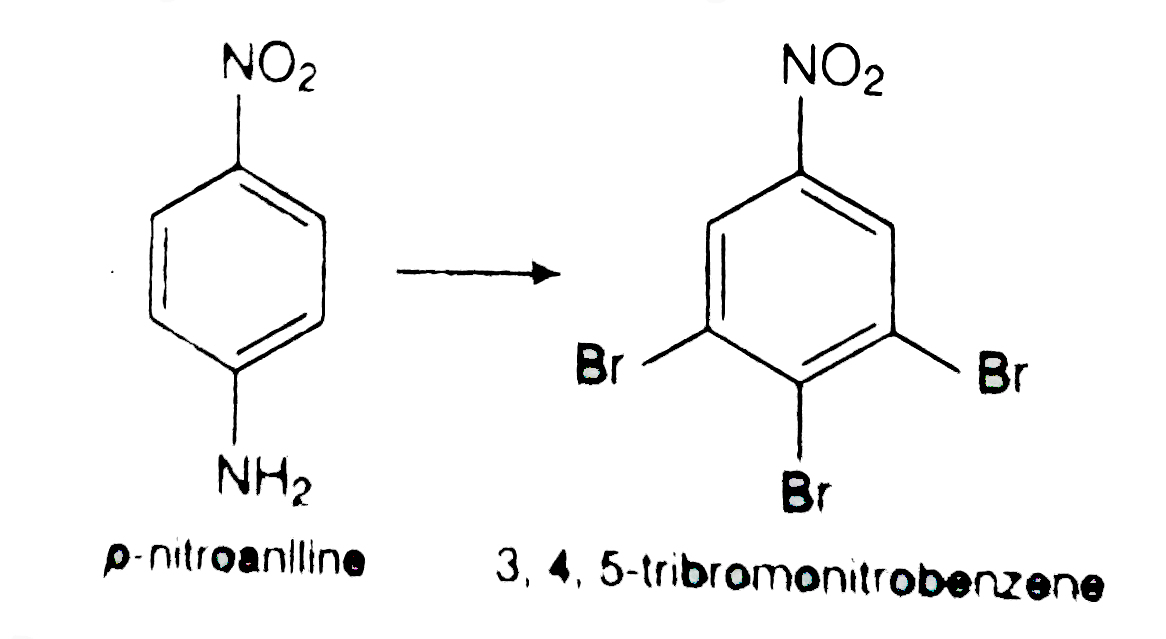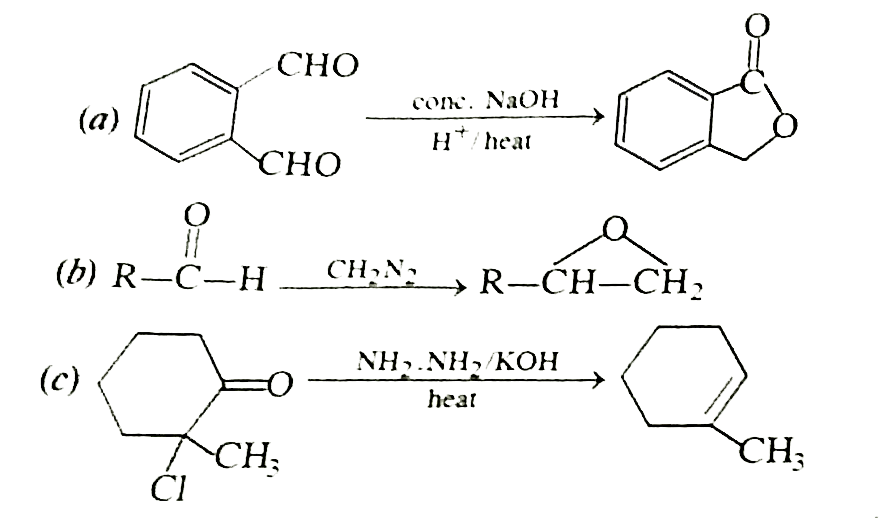How will you bring about the following conversions ?
Aniline to sulfanilic acid
To convert aniline to sulfanilic acid, we can follow these steps:
Step 1: Formation of Anilinium Hydrogen Sulfate
- Reaction: Aniline (C6H5NH2) reacts with concentrated sulfuric acid (H2SO4).
- Equation:
C6H5NH2+H2SO4→C6H5NH3+HSO4−
- Explanation: The nitrogen atom in aniline has a lone pair of electrons, which allows it to abstract a proton (H+) from sulfuric acid, forming anilinium hydrogen sulfate (C6H5NH3^+ HSO4^-).
Step 2: Heating Anilinium Hydrogen Sulfate
- Process: Heat the anilinium hydrogen sulfate at a temperature of 180 to 200 degrees Celsius.
- Reaction:
C6H5NH3+HSO4−180−200∘C−−−−−−−→C6H4(NH2)(SO3H)+H2SO4
- Explanation: Upon heating, a rearrangement occurs. The sulfate group (HSO4^-) migrates to the para position of the aromatic ring, resulting in the formation of sulfanilic acid (C6H4(NH2)(SO3H)).
Step 3: Formation of Sulfanilic Acid
- Final Product: The product of this reaction is sulfanilic acid, which has the structure:
C6H4(NH2)(SO3H)
- Explanation: The sulfonic acid group (SO3H) is now attached to the para position relative to the amino group (NH2) on the benzene ring.
Summary of the Conversion
1. Aniline + H2SO4 → Anilinium Hydrogen Sulfate
2. Anilinium Hydrogen Sulfate (heated) → Sulfanilic Acid
- Reaction: Aniline (C6H5NH2) reacts with concentrated sulfuric acid (H2SO4).
- Equation:
C6H5NH2+H2SO4→C6H5NH3+HSO4−
- Explanation: The nitrogen atom in aniline has a lone pair of electrons, which allows it to abstract a proton (H+) from sulfuric acid, forming anilinium hydrogen sulfate (C6H5NH3^+ HSO4^-).
- Process: Heat the anilinium hydrogen sulfate at a temperature of 180 to 200 degrees Celsius.
- Reaction:
C6H5NH3+HSO4−180−200∘C−−−−−−−→C6H4(NH2)(SO3H)+H2SO4
- Explanation: Upon heating, a rearrangement occurs. The sulfate group (HSO4^-) migrates to the para position of the aromatic ring, resulting in the formation of sulfanilic acid (C6H4(NH2)(SO3H)).
- Final Product: The product of this reaction is sulfanilic acid, which has the structure:
C6H4(NH2)(SO3H)
- Explanation: The sulfonic acid group (SO3H) is now attached to the para position relative to the amino group (NH2) on the benzene ring.
1. Aniline + H2SO4 → Anilinium Hydrogen Sulfate
2. Anilinium Hydrogen Sulfate (heated) → Sulfanilic Acid
Topper's Solved these Questions
- ORGANIC COMPOUNDS CONTAINING NITROGENBOOK - ICSECHAPTER - ORGANIC COMPOUNDS CONTAINING NITROGENEXERCISE - ISC EXAMINATION QUESTIONS ( PART-I OBJECTIVE QUESTIONS)
7 Videos
- ORGANIC COMPOUNDS CONTAINING NITROGENBOOK - ICSECHAPTER - ORGANIC COMPOUNDS CONTAINING NITROGENEXERCISE - ISC EXAMINATION QUESTIONS ( PART-II DESCRIPTIVE QUESTIONS)
33 Videos
- ORGANIC COMPOUNDS CONTAINING NITROGENBOOK - ICSECHAPTER - ORGANIC COMPOUNDS CONTAINING NITROGENEXERCISE - EXERCISE (PART-II DESCRIPTIVE QUESTIONS- SHORT ANSWER QUESTIONS )
92 Videos
- ISC QUESTION PAPERBOOK - ICSECHAPTER - ISC QUESTION PAPEREXERCISE - PART-II(SECTION-B)
74 Videos
- P-BLOCK ELEMENTSBOOK - ICSECHAPTER - P-BLOCK ELEMENTSEXERCISE - SOURCE BASED QUESTIONS
10 Videos
Similar Questions
How will you bring out the following conversion?

View SolutionHow will you bring about the following changes :

View SolutionHow will you bring about the following conversions ?
Aniline to o-nitroaniline
View SolutionHow will you bring about the following conversions ?
Aniline to bromobenzene
View SolutionHow will you bring out the following conversions ?
Ethene to ethyne
View SolutionHow will you bring out the following conversions ?
Ethane to ethyne
View SolutionHow will you bring out the following conversions ?
Ethyne to ethane
View SolutionHow will you bring about the following conversions?
Acetic acid to ethane
View SolutionHow will you bring out the following conversions ?
Ethyne to methane
View SolutionHow will you bring about the following conversions :
Propanoic acid to lactic acid
View Solution
